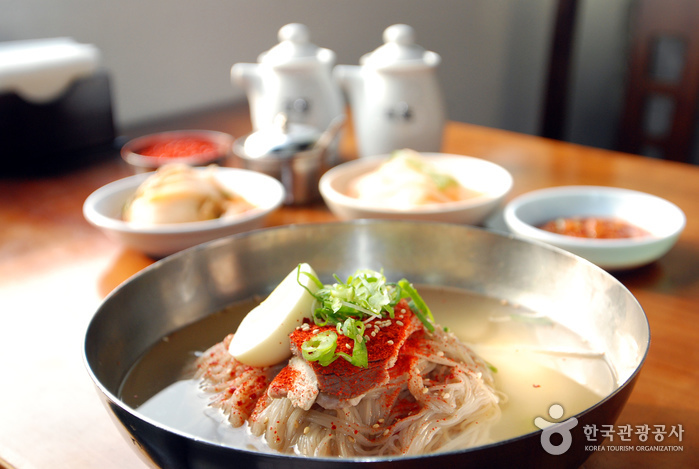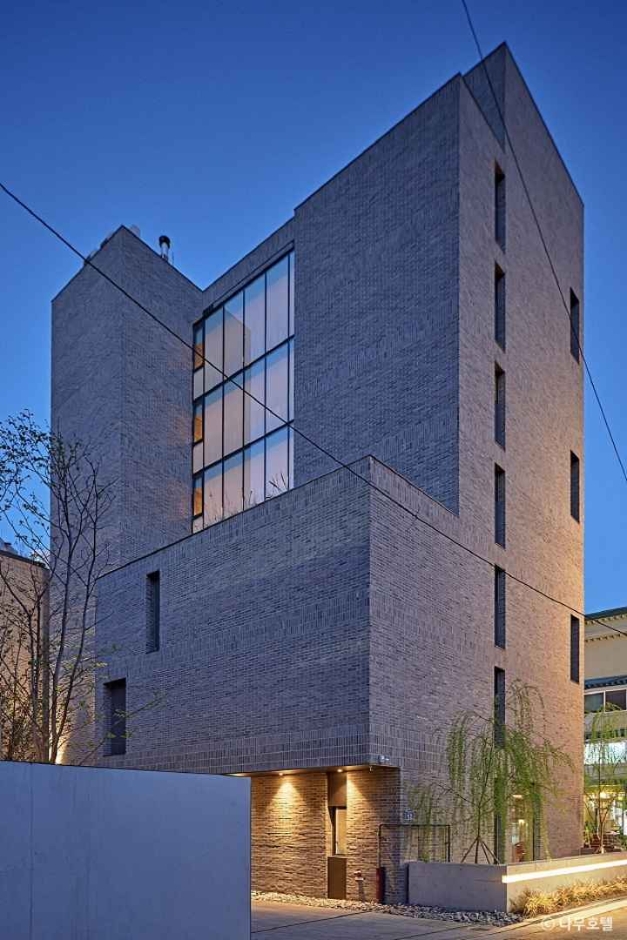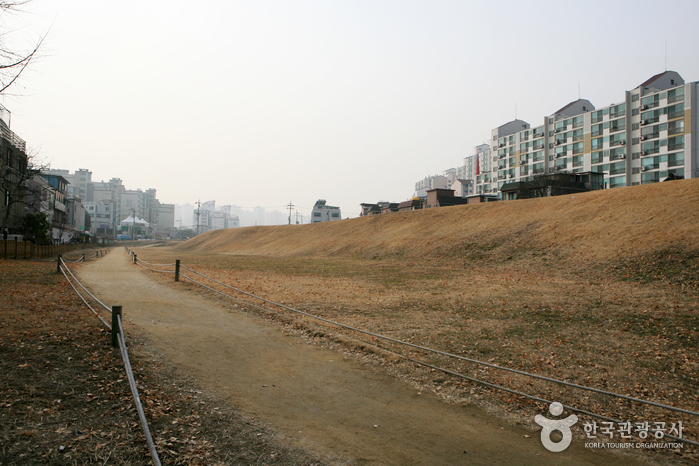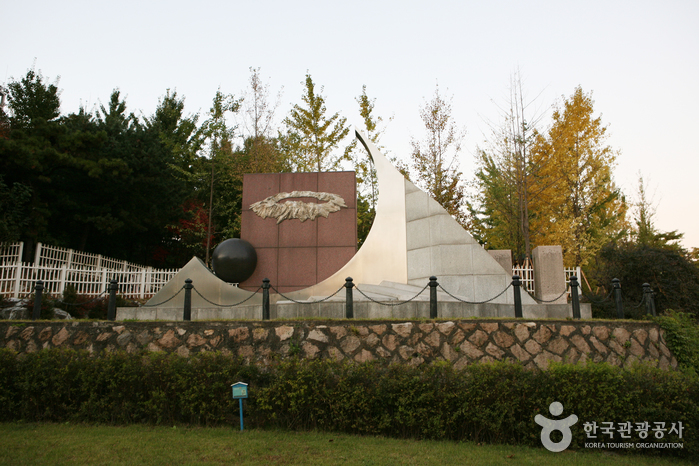Namsangol Hanok Village (남산골한옥마을)
10.3Km 2025-07-14
28 Toegye-ro 34-gil, Jung-gu, Seoul
Namsangol Hanok Village opened in 1998 on the northern side of Namsan Mountain in the center of the capital. This village has five restored hanok (traditional Korean house) premises, a pavilion, a traditional garden, a performance art stage, and a time capsule plaza, making it a perfect spot for locals and tourists to take a leisure walk. Upon entering from the front gate, visitors will get a taste of Korea's traditional life while escaping from bustling city life. The traditional garden with its pavilion and old houses creates a peaceful ambiance before the forested Namsan Mountain. A time capsule commemorating Seoul’s 600th anniversary was buried in 1994 at the highest point of the village and is scheduled to be reopened 400 years later in 2394.
The five hanok premises at Namsangol Hanok Village once belonged to aristocrats and government officials of the Joseon dynasty. Each house was originally located in a different neighborhood, but they were all moved to this area and restored to their original form. The houses were rebuilt using their original materials, except for one house, where the materials were too old and deteriorated to be reused. The premises were carefully restored and replicated according to their original form to depict the owners’ social class and personality. These buildings are now used as an exhibit to portray the living environment during the Joseon dynasty and as a venue for educational and cultural programs for children and tourists.
Some of the unique programs and activities to participate in include wearing hanbok, folding hanji (traditional Korean paper), writing in Korean, traditional tea ceremony, traditional etiquette school, and herbal medicine experience. There are also taekwondo demonstrations and other various performances held around the village. Visitors can also try traditional games such as yunnori (traditional board game), or understand more about the area through a guided tour.
Olive Young - Gwangnaru Station Branch [Tax Refund Shop] (올리브영 광나루역)
10.3Km 2024-04-18
1F, 607, Achasan-ro, Gwangjin-gu, Seoul
-
Wumukbaemi Sillim Main Store (우묵배미)
10.3Km 2024-02-16
1540 Nambusunhwan-ro, Gwanak-gu, Seoul
Wumukbaemi is a Korean restaurant situated near the Horim Museum. The name "Wumukbaemi" translates to a dented rice paddy, harking back to the old name of Nangok, the location of the restaurant. The standout dish is the dwaeji dubu jjigae (pork and bean curd jjigae), featuring ample portions of pork and bean curd. It boasts a clean taste, free from the strong smell of pork and without excessive saltiness. Nearby attractions encompass Gwanaksan Ecological Park, Boramae Park, and Yeouido Park.
Olive Young - Hwanghak Sageori Branch [Tax Refund Shop] (올리브영 황학사거리)
10.3Km 2024-04-17
410, Wangsimni-ro, Seongdong-gu, Seoul
-
Olive Young - Sinheung Station Branch [Tax Refund Shop] (올리브영 신흥역)
10.3Km 2024-04-19
1F, 257-1, Sanseong-daero, Sujeong-gu, Seongnam-si, Gyeonggi-do
-
Seoul Hyochang Park (서울 효창공원)
10.3Km 2024-07-09
177-18 Hyochangwon-ro, Yongsan-gu, Seoul
+82-2-2199-7608
Hyochang Park covers 122,245 square meters spanning across Hyochang-dong and Cheongpa 2-dong. It is a historic landmark that once contained several royal tombs, and was known at that time as Hyochangwon. The cemeteries that were originally located in Hyochangwon belonged to Crown Prince Munhyo, King Jeongjo’s first son who died at the age of five; Royal Noble Consort Uibin of the Seong Clan, King Jeongjo’s royal concubine and Crown Prince Munhyo’s mother; Royal Noble Consort Sugui of the Park Clan, King Sunjo’s royal concubine; and her daughter Princess Yeongon. The royal tombs were moved to Seooreung Tombs in the waning months of the Japanese colonial period. The Japanese empire began the development of Hyochangwon into a park in 1924, and the Japanese governor-general officially assigned the site as a park in 1940.
Presently, several of Korea’s greatest leaders are buried in Hyochang Park. The remains mostly belong to independence activists including Yoon Bong-gil, Lee Bong-chang, and Baek Jeong-gi, whose graves are collectively known as Samuisa Tomb. A statue of Lee Bong-chang has been built in the graveyard. Among the other patriotic martyrs who are interred in the park are Kim Gu and some of the key figures of the provisional government such as Lee Dong-nyeong, Cha I-seok, and Cho Seong-hwan. An ancestral shrine named Uiyeolsa has been built along the main gate and holds the portraits of the deceased independence activists.
Pildong Myeonok (필동면옥)
10.3Km 2024-03-07
26, Seoae-ro, Jung-gu, Seoul
+82-2-2266-2611
Pildong Myeonok specializes in authentic pyeongyang naengmyeon (pyeongyang cold buckwheat noodles). Their signature dish is Pyeongyang naengmyeon (Pyeongyang cold buckwheat noodles), which has a light and refreshing broth and chewy noodles. Mandu and Mandut guk (Mandu soup) are also popular dishes to go with it. Having been selected for the Michelin Guide Seoul 2023, this restaurant is a favorite among locals and tourists alike for its flavorful noodles.
Namu Hotel (나무호텔)
10.3Km 2024-06-04
9 Achasan-ro 76ga-gil, Gwangjin-gu, Seoul
+82-2-456-3271
Namu Hotel, which received the Institute of Architects Award, is a hotel with a distictive design. Rather than having the main entrance on a main road, the hotel must be entered through the alley. Each room has its own unique style in terms of structure and furniture arrangement. Most rooms also feature a blacony that allows guests to be one with nature while also being protected from outside forces. Enjoy a soak in the outdoor bathtub to relax.
Pungnap-dong Toseong Fortress (서울 풍납동 토성)
10.3Km 2025-01-10
Pungnap-dong, Songpa-gu, Seoul
+82-2-2147-2800
Onjo, the progenitor of Kingdom Baekje, first settled in Wiryeseong Hanam. But exact location is still unknown. One thing for sure, however, is that Pungnaptoseong Fortress, Mongchontoseong Fortress, Bangidong Ancient Tombs of Baekje, Seokchondong Stone Mound Tomb of Early Baekje are the remains of Baekje. Pungnaptoseong Fortress faces Hangang River to its west and connects to Mongchontoseong Fortress to the south. To the northwest faces Achasanseong Fortress over Hangang River and far to the southeast is Namhansanseong Fortress.
Pungnaptoseong Fortress, located at the south end of Cheonhodaegyo Bridge over Hangang River, is one of the remains of Early Baekje. Originally, the fortress was 4km in circumference, but due to massive overflowing of Hangang River during flood season in 1925, most of the fortress was lost and only 2.7km of it remains. To the east of the fortress are 4 vestiges of the fortress gates. The remains from the prehistoric era through the Samguk (Three States) era have been unearthed, indicating that this place was a residential area well before the Baekje Era. Through vigorous excavation, some people suggest that there used to be a palace located here during the Baekje Era.
Boramae Park (보라매공원)
10.4Km 2021-03-20
33, Yeouidaebang-ro 20-gil, Dongjak-gu, Seoul
+82-2-120
Boramae Park is a former Air Force Academy site that has been transformed into a recreational park on May 1986. At approximately 397,000 ㎡, the park holds various sports facilities including a tennis court and sports center as well as convenient facilities such as a small zoo, pond, walking trail and more. The 2nd floor of Building 4 has a library that is popular with teenagers as well as Teenager Center where they can enjoy various activities and programs. The symbolic tower of the Air Force Academy still stands as a powerful symbol of loyalty and filial piety.

![Olive Young - Gwangnaru Station Branch [Tax Refund Shop] (올리브영 광나루역)](http://tong.visitkorea.or.kr/cms/resource/92/2878792_image2_1.jpg)

![Olive Young - Hwanghak Sageori Branch [Tax Refund Shop] (올리브영 황학사거리)](http://tong.visitkorea.or.kr/cms/resource/46/2888246_image2_1.jpg)
![Olive Young - Sinheung Station Branch [Tax Refund Shop] (올리브영 신흥역)](http://tong.visitkorea.or.kr/cms/resource/46/2881646_image2_1.jpg)




 English
English
 한국어
한국어 日本語
日本語 中文(简体)
中文(简体) Deutsch
Deutsch Français
Français Español
Español Русский
Русский